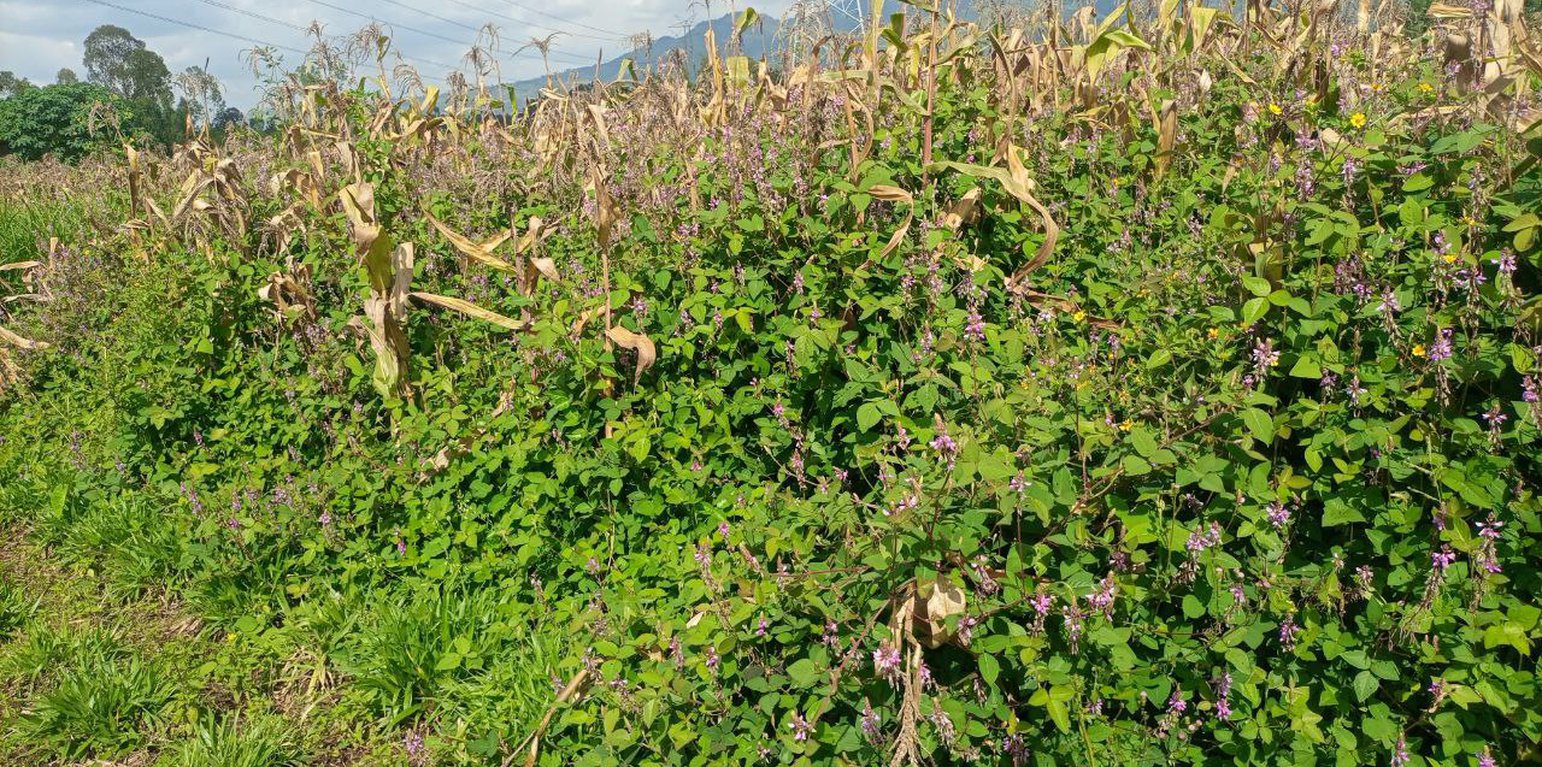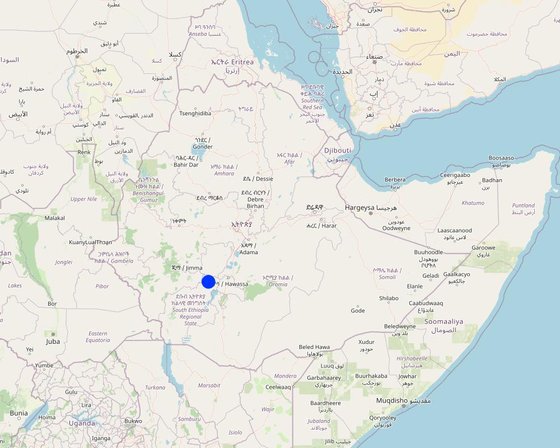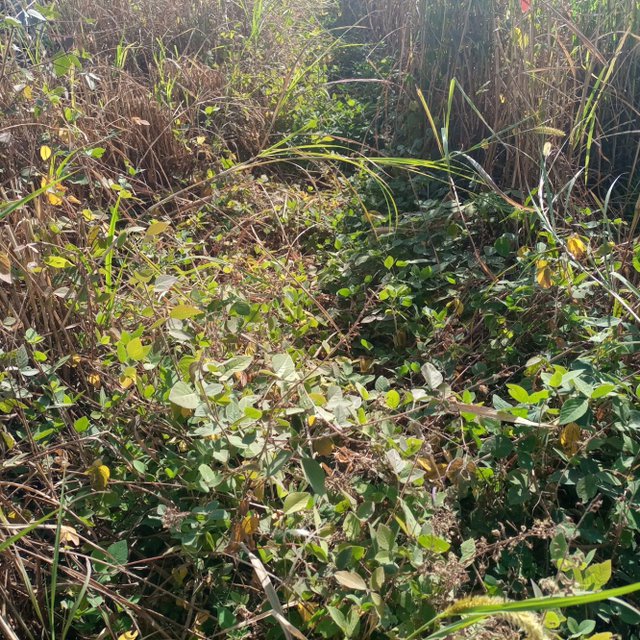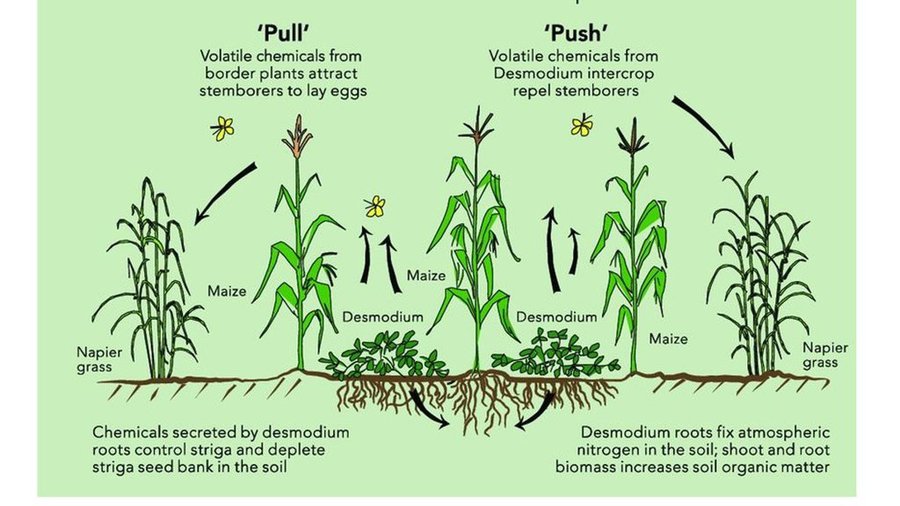



Cover crops are planted to conserve the soil on bare, fallow farmland or under a main crop. They can be grown on their own or between rows of annual and perennial crops such as maize, coffee, and fruits. The main purposes of growing cover crops are to cover the soil with low-growing vegetation, protect the soil from exposure to sun and rain, suppress weeds, improve soil fertility, supply livestock feed, and manage insect pests. Cover crops may be nitrogen fixing (if legumes), and they make productive use of spaces between crop rows, as well as controlling wind and water erosion. They also have the potential to restore soil fertility and help in climate change adaptation, as well as sequestration of atmospheric carbon above and below soil surface. Furthermore, cover crops can be fed to livestock, helping to bridge periods of shortage of feed when grazing lands are not available – which is an increasing problem because of growing population pressure and expansion of croplands. Land users give huge credit for its role as a pesticide by deterring armyworm and stalk borer when used as a border, and stopping their advance into the maize crop.
Desmodium is an example of a leguminous cover crop, improving soil fertility via fixing atmospheric nitrogen, increasing infiltration and productive use of soil moisture, and catering for livestock via a “cut-and-carry” fodder system. Desmodium is planted between rows of maize crops as well as between grass hedgerows around the farm. For its establishment, access to desmodium seed is essential. Once established, it remains to serve as a permanent source of planting material. Nevertheless, there are some disadvantages of desmodium: seed collection is difficult, it may trap honey bees and it can compete with the crop for light and space if allowed to grow too tall. Thus, efficient management of desmodium is essential. Nevertheless, as part of an agro-ecological intervention, cover crops like desmodium deliver multiple benefits to resource-poor farmers and can be viewed as an investment in improving soil fertility as well as soil health. Overall, cover crops improve productivity, and help ensure yield stability and contribute to a healthier ecosystem.

Location: Kuto Sorfela kebele, Sodo Zuria, SNNPR, Ethiopia
No. of Technology sites analysed: single site
Spread of the Technology: evenly spread over an area (approx. < 0.1 km2 (10 ha))
In a permanently protected area?: No
Date of implementation: 2022
Type of introduction









| Specify input | Unit | Quantity | Costs per Unit (ETB) | Total costs per input (ETB) | % of costs borne by land users |
| Labour | |||||
| Land preparation | PDs | 4.0 | 500.0 | 2000.0 | 100.0 |
| Cutting for use as feed | PDs | 8.0 | 250.0 | 2000.0 | 100.0 |
| Harvesting total biomass and /or seed | PDs | 5.0 | 250.0 | 1250.0 | 100.0 |
| Plant material | |||||
| Desmodium seed | kg | 3.0 | 120.0 | 360.0 | |
| Total costs for maintenance of the Technology | 5'610.0 | ||||
| Total costs for maintenance of the Technology in USD | 104.61 | ||||
The land user accessed electricity in rural areas. She also used biogas for energy production.
Increase with proper management of the companion crops on a gradual basis.
Simultaneously increase with good harvest per unit of land as the integration allows to combat against pests.
Desmodium gives high biomass production. So it supplies more fodder if timely trimmed and supplied to the livestock.
Believed to increase with the application of appropriate management practices.
Desmodium fixes atmospheric nitrogen that improves the fertility of the soil in addition to the production of large biomass that supplies organic matter to the soil.
Slightly decrease as desmodium fix atmospheric nitrogen in the long run and partly complements urea fertilizer.
It demands follow-up and frequently monitors and manages the growth of desmodium to reduce its competition with the main crops.
As it creates evidence-based learning, it improves land user's SLM knowledge.
High biomass production and the ground covering traits of desmodium assist to slow down surface runoff and promote infiltration deep into the soil.
As the companion crop fixes atmospheric nitrogen, it improves nutrient cycling.
Land users suggested the pesticidal role of desmodium as compared to the hidden contribution to the improvement of soil fertility through its natural traits of fixing atmospheric nitrogen.
It increases biomass production that absorbs carbon above and below the surface of the soil.
Contributes to groundwater recharge by reducing surface runoff.
Facts are not available to complement this allegation since the implementation is on smaller areas of farmland.
It breaks the speed of flood that overflow and damage neighboring areas.